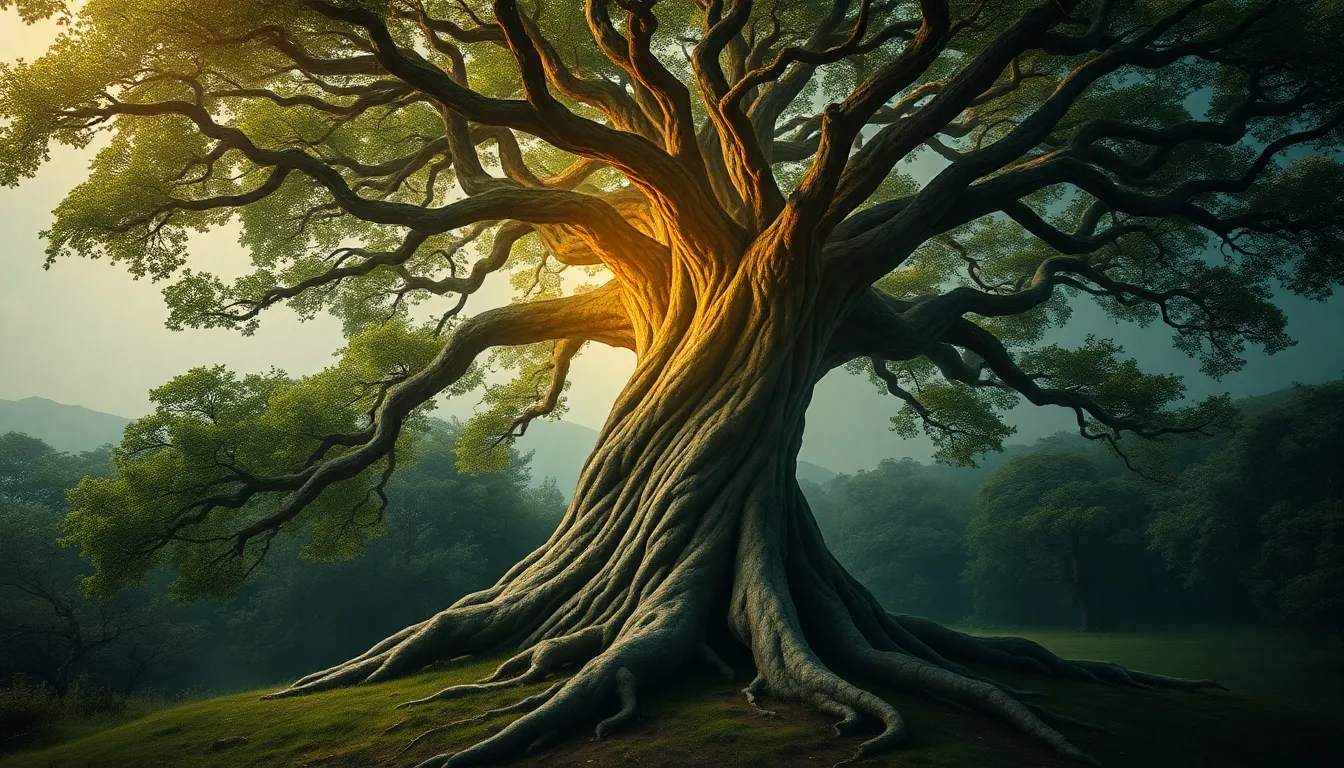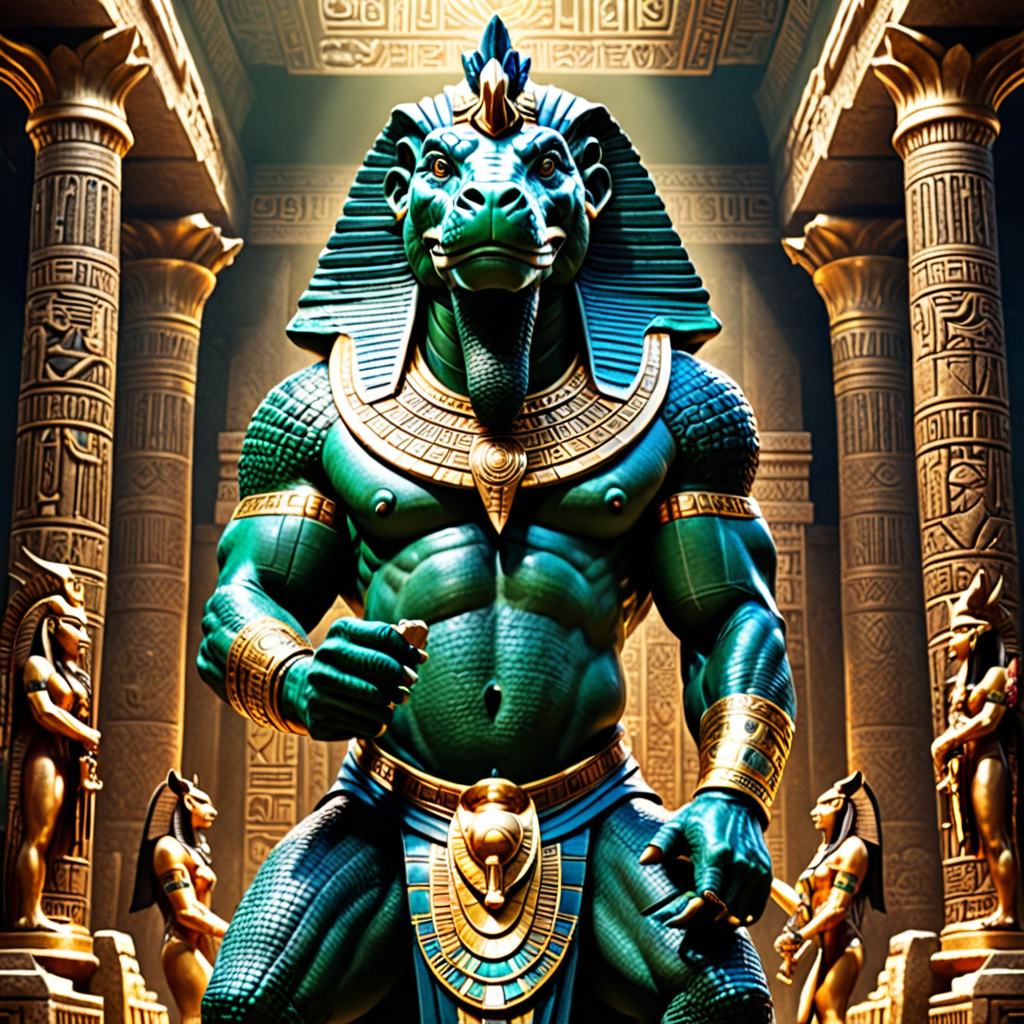The Sacred Tree of the Druids: Myths of Ancient Wisdom
I. Introduction
Druidic traditions are steeped in ancient wisdom, spirituality, and a profound connection to nature. The Druids, who were the priestly class in ancient Celtic societies, held a deep reverence for the natural world, particularly trees. In Druidic culture, trees are not merely plants; they are sacred entities that embody life, wisdom, and the connection between the earth and the cosmos. This article aims to explore the significance of the sacred tree in Druidic traditions, its historical context, the mythology surrounding it, and its relevance in both ancient and modern practices.
II. Historical Context of the Druids
The origins of Druidism can be traced back to ancient Celtic societies, where Druids served as spiritual leaders, teachers, and healers. They played a crucial role in the religious and cultural life of the Celts, functioning as mediators between the spiritual and the material worlds.
- Origins of Druidism: Druidism emerged around 300 BCE, primarily in what is now modern-day France, the British Isles, and Ireland.
- Role of Druids: Druids were responsible for conducting rituals, preserving oral traditions, and maintaining the sacred knowledge of their people.
- Influence on Contemporary Practices: Today, many modern spiritual practices draw inspiration from Druidic beliefs, emphasizing nature worship and ecological awareness.
III. The Sacred Tree: A Symbol of Life
In Druidic lore, the sacred tree is a powerful symbol of life, representing growth, renewal, and the interconnectedness of all beings. The tree is often seen as a bridge between the earthly realm and the divine.
A. Definition of the Sacred Tree
The Sacred Tree is a central motif in Druidic mythology, often embodying the essence of the universe. It symbolizes the cycles of life, death, and rebirth, reflecting the natural rhythms of the world.
B. Characteristics and Types of Sacred Trees
Different types of trees hold varying significance in Druidic traditions. Here are some notable examples:
- Oak: Symbolizes strength and endurance.
- Ash: Represents wisdom and knowledge.
- Yew: Associated with death and rebirth.
- Birch: Symbolizes new beginnings and renewal.
C. The Tree as a Symbol of Connection to the Cosmos
The sacred tree is often depicted as having roots that reach deep into the earth and branches that extend into the heavens, illustrating the connection between the physical world and the spiritual realm. This imagery reflects the Druidic belief in the unity of all life.
IV. Mythology Surrounding the Sacred Tree
Numerous legends and folklore narratives surround the sacred tree, particularly the oak, which is revered as the king of trees in Druidic mythology.
A. Legends and Folklore
Many tales recount the mystical properties of the sacred tree, often featuring it as a central character in stories of creation, transformation, and enlightenment.
B. The Oak: King of Trees
The oak tree is particularly significant in Druidic lore, symbolizing strength, stability, and endurance. It is often associated with the god of thunder, representing power and protection.
C. Other Significant Trees
In addition to the oak, other trees hold special meaning:
- Ash: Believed to be the tree of life, connecting the realms of gods, humans, and the underworld.
- Yew: Often found in graveyards, symbolizing eternal life and the cycle of death and rebirth.
- Birch: Represents new beginnings, often used in rituals for purification and renewal.
V. The Sacred Tree in Druidic Rituals
The sacred tree plays a vital role in various Druidic rituals, often serving as a focal point for ceremonies and celebrations.
A. Ceremonial Uses
Druids would often conduct rituals around sacred trees, using them as altars or places of worship. These rituals could include offerings, prayers, and invocations to the spirit of the tree.
B. Seasonal Festivals and Tree Worship
Seasonal festivals, such as Beltane and Samhain, often included tree worship, celebrating the cycles of nature and the changing seasons.
C. Role in Divination Practices
Trees were also used in divination practices, where Druids would seek guidance from the spirits residing within them. Different trees were associated with various omens and messages.
VI. The Sacred Tree and Ancient Wisdom
The sacred tree is not only a symbol of life but also a source of ancient wisdom. Druids believed that trees could impart lessons about existence and the natural world.
A. Interpretation of Wisdom
Wisdom associated with the sacred tree includes understanding the cycles of life, respecting nature, and recognizing the interconnectedness of all beings.
B. The Tree as a Teacher
Trees serve as a metaphorical teacher, offering insights into patience, resilience, and the importance of nurturing one’s environment.
C. Interconnectedness of Nature and Knowledge
Druids viewed nature as a living library of knowledge, with trees as its guardians. This interconnectedness underscores the importance of harmony with the natural world.
VII. The Sacred Tree in Modern Druidry
The revival of Druidic practices in the 20th century has brought renewed interest in the sacred tree and its significance.
A. Revival of Druidic Practices
Modern Druidry has seen a resurgence, with many practitioners seeking to reconnect with the ancient wisdom of the Druids and their reverence for nature.
B. Contemporary Interpretations
Today, the sacred tree is often viewed as a symbol of ecological responsibility, inviting individuals to honor and protect the natural world.
C. Role in Environmental Movements
The principles of Druidry align with many contemporary environmental movements, emphasizing sustainability, conservation, and the protection of sacred natural spaces.
VIII. Comparative Analysis with Other Cultures
The concept of the sacred tree is not unique to Druidism; it appears in various cultural mythologies around the world.
A. Similarities with Other Cultural Symbols
Many cultures have their own versions of the sacred tree, reflecting universal themes of life, wisdom, and connection:
- The Tree of Life: Found in various religions, symbolizing growth and interconnectedness.
- Yggdrasil: In Norse mythology, Yggdrasil is the World Tree connecting all realms.
- Bodhi Tree: In Buddhism, it represents enlightenment and spiritual awakening.
B. Cross-Cultural Themes
Across different traditions, the sacred tree often symbolizes wisdom, life, and the interconnectedness of all beings, highlighting a shared reverence for nature.
IX. The Environmental Significance of Trees
In today’s world, the importance of trees extends beyond their spiritual symbolism; they play a crucial role in maintaining ecological balance.
A. Ecological Importance
Trees provide essential ecosystem services, including:
- Producing oxygen
- Reducing carbon dioxide
- Supporting biodiversity
- Preventing soil erosion
B. Efforts to Preserve Sacred and Ancient Trees
Many organizations and individuals are working to protect sacred and ancient trees, recognizing their cultural and ecological significance.
C. Role of Spirituality in Conservation
Spiritual beliefs can motivate individuals to engage in environmental conservation, fostering a sense of responsibility toward the natural world.
X. Conclusion
In conclusion, the sacred tree holds a place of profound importance in Druidic tradition, symbolizing life, wisdom, and the interconnectedness of all beings. The reverence for trees reflects a deep understanding of nature’s cycles and the lessons it imparts. As we navigate the challenges of modern life, the ancient wisdom of the Druids encourages us to explore and honor the natural world, reminding us that we are part of a larger, interconnected web of life.




